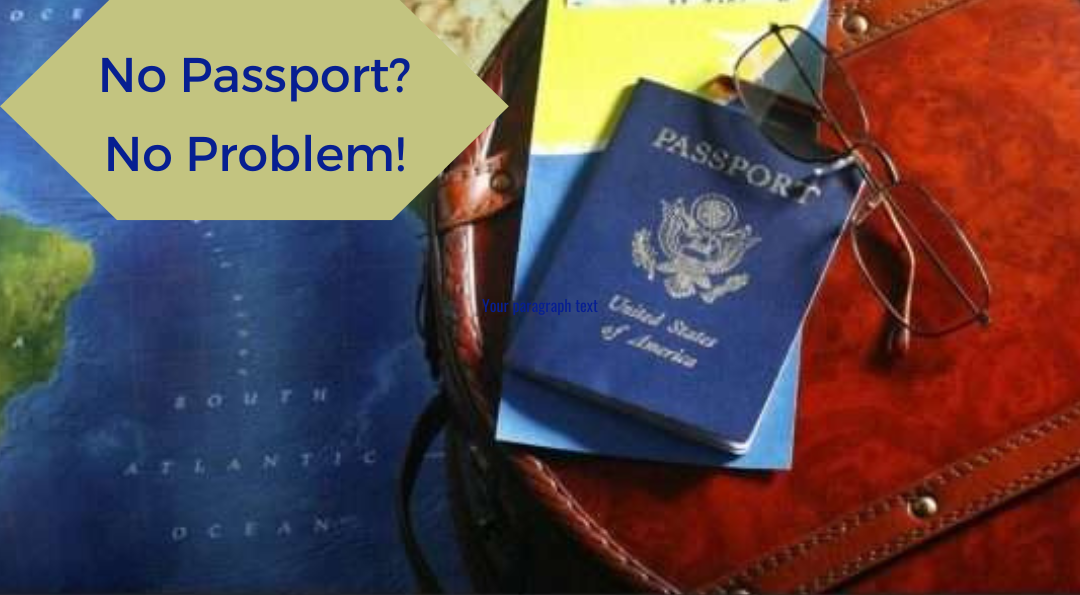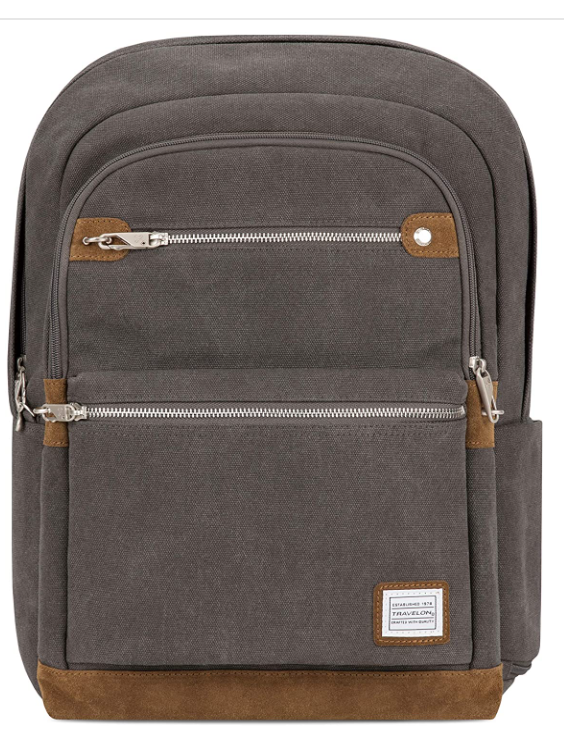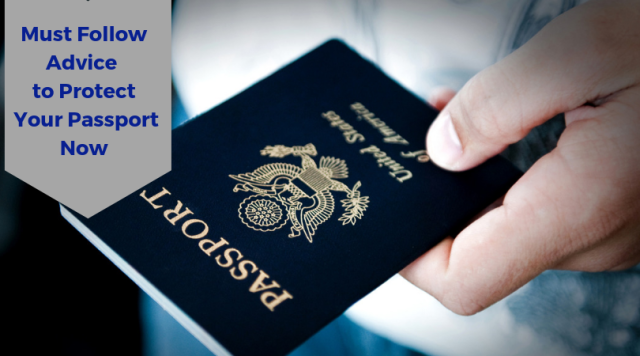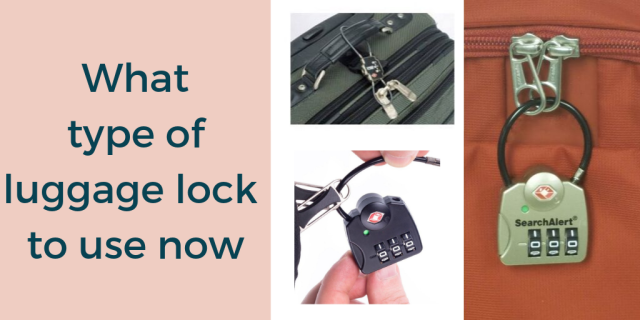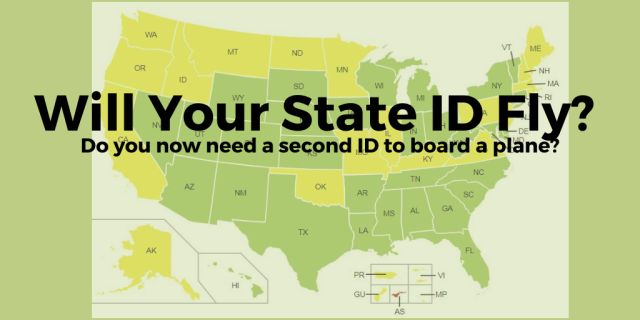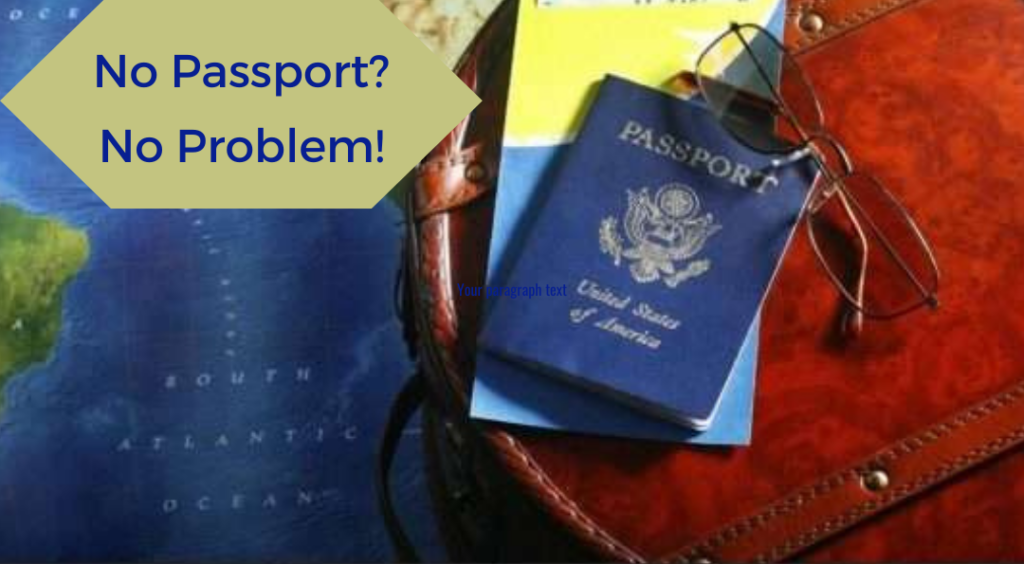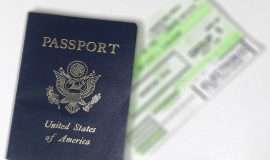No passport? No problem! Places you can travel to without a passport include the tropical locations of Guam, Puerto Rico, and the US Virgin Islands. If you are starting your travel from a US location and want to visit a tropical destination that is a US territory you can travel without a passport.
Places You Can Travel to Without a Passport
Consider the below tropical locations for your next getaway destination.
Guam
Puerto Rico
U.S. Virgin Islands
America Samoa
Swains Island
Commonwealth of Northern Mariana Islands
According to the State Department, any territory that belongs to the US and U.S. citizens or nationals who travel directly between parts of the United States, which includes Guam, Puerto Rico, the U.S. Virgin Islands, American Samoa, Swains Island, and the Commonwealth of the Northern Mariana Islands, without touching at a foreign port or place, are not required to present a valid passport.
Our neighbors Mexico and Canada can also be visited without a passport however the requirements are a bit different.
Travel to Canada Without a Passport
In order to pass the Canadian border by land, whether it is a drive or a hike, all U.S. citizens are required to carry an identification document, which carries proof of citizenship. Apart from a passport, U.S. citizens can also use a birth certificate, certificate of citizenship, naturalization certificate, or a NEXUS card. With any of these documents, you can cross the Canadian border. However, if you wish to fly to Canada, a valid U.S. passport will be necessary.
Travel to Mexico Without a Passport
Travel to Mexico does not require a passport, However, thanks to the Western Hemisphere Travel Initiative, when passing the Mexican border by land, a passport is not the only form of allowed documentation. If you are a U.S. citizen, you can also use a passport card, a NEXUS card or the Enhanced Driver’s License. If flying into Mexico you will need a passport.
If you choose to travel without a passport to tropical locations an additional benefit of visiting any of these locations is that the currency in use is the US dollar and English is spoken there. Additionally, your flight options are good as many US carriers have flights there.
Besides not needing a passport which can be expensive to get ($165 minimum per traveler).
Details on Acceptable Travel IDs
- U.S. passport
- U.S. passport card
- DHS “Trusted Traveler” cards (Global Entry, NEXUS, SENTRI, FAST)
- U.S. Military ID
- Permanent Resident Card
- Border Crossing Card
- DHS-designated enhanced driver’s license
- Drivers’ licenses or other state photo identity cards issued by a Department of Motor Vehicles (or equivalent) that meets REAL ID benchmarks (All states are currently in compliance.)
- A Native American Tribal Photo ID
- An airline or airport-issued ID (if issued under a TSA-approved security plan)
- A Registered Traveler Card (that contains your name, date of birth, gender, expiration date, and a tamper-resistant feature)
- A foreign government-issued passport
- Canadian provincial driver’s license or Indian and Northern Affairs Canada (INAC) card
- Transportation Worker Identification Credential (TWIC)
Non-US/Canadian citizens are not required to carry their passports if they have documents issued by the U.S. government such as Permanent Resident Cards. Those who do not should be carrying their passports while visiting the U.S. If you do not have an acceptable ID you may be subject to additional screening.
Children under the age of 18 traveling with an adult are not required to show ID at the time of check-in.
Children ages 15-17 traveling alone need one of the following:
- Driver’s license
- Passport
- Credit card
- School ID
- Company ID
- Library card
- Birth certificate
- Social Security card
- Organization ID (such as athletic club, etc.)
- Proof of auto insurance in passenger’s name
Children ages 5-14 traveling alone are not required to show ID at the time of check-in, however, they are encouraged to carry some form of ID during travel.
Forgot Your ID?
In the event, you arrive at the airport without valid identification, because it is lost or at home, you may still be allowed to fly. The TSA officer may ask you to complete a form to include your name and current address and may ask additional questions to confirm your identity. If your identity is confirmed, you will be allowed to enter the screening checkpoint. You may be subject to additional screening. You will not be allowed to fly if your identity cannot be confirmed, you chose to not provide proper identification, contact the TSA to learn more.
You can travel without a passport, but be sure to check on all ID requirements before you go.
Bonus tip: Keep photos of all your IDs on your phone in case of loss, at least you’ll have a starting point with border officials.
More Articles You May Like



